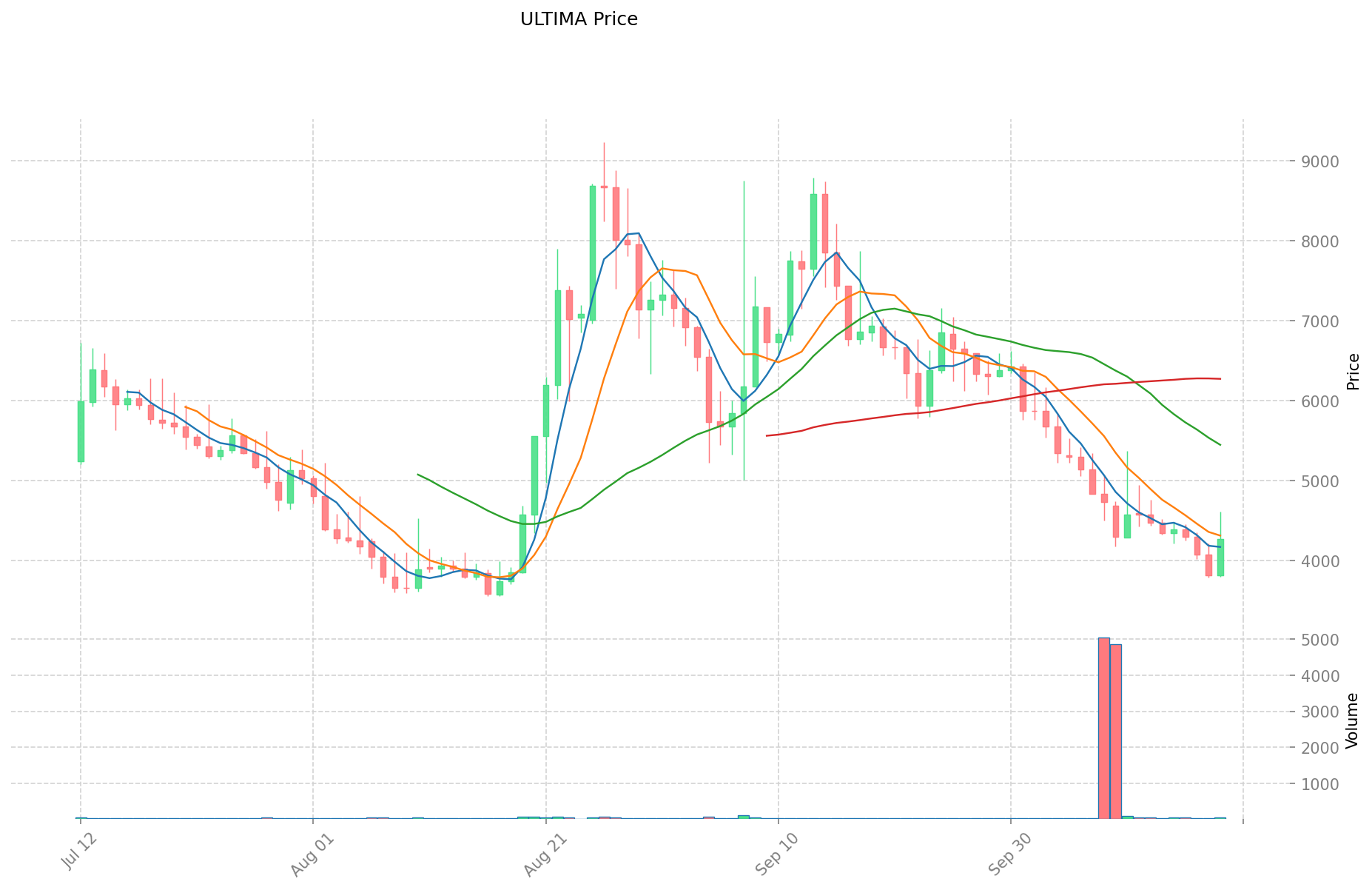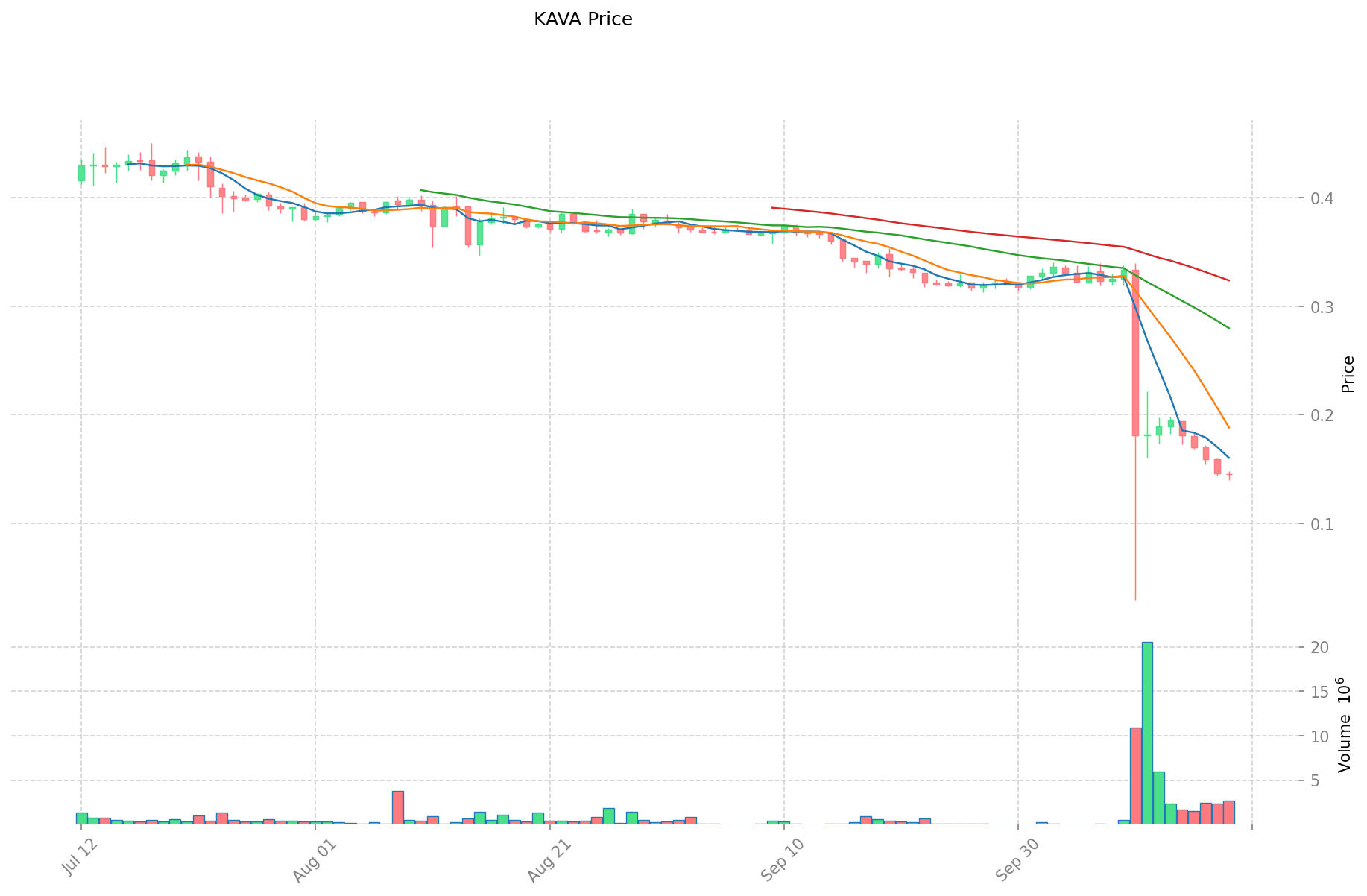ULTIMA vs KAVA: A Showdown of Advanced AI Language Models Redefining Conversational Intelligence
Introduction: Investment Comparison of ULTIMA vs KAVA
In the cryptocurrency market, the comparison between ULTIMA vs KAVA has always been an unavoidable topic for investors. The two not only show significant differences in market cap ranking, application scenarios, and price performance, but also represent different positioning in crypto assets.
ULTIMA (ULTIMA): Since its launch in March 2023, it has gained market recognition for its innovative blockchain products and ecosystem.
KAVA (KAVA): Introduced in October 2019, it has been hailed as a cross-chain DeFi platform, providing decentralized financial services for mainstream digital assets.
This article will comprehensively analyze the investment value comparison between ULTIMA vs KAVA, focusing on historical price trends, supply mechanisms, institutional adoption, technical ecosystems, and future predictions, attempting to answer the question investors care about most:
"Which is the better buy right now?"
I. Price History Comparison and Current Market Status
ULTIMA (Coin A) and KAVA (Coin B) Historical Price Trends
- 2025: ULTIMA reached its all-time high of $23,602.1 on February 16, 2025, but has since experienced a significant decline.
- 2021: KAVA reached its all-time high of $9.12 on August 30, 2021, during the broader cryptocurrency bull market.
- Comparative analysis: In the current market cycle, ULTIMA has dropped from its high of $23,602.1 to the current price of $4,266.6, while KAVA has fallen from its peak of $9.12 to $0.14447.
Current Market Situation (2025-10-19)
- ULTIMA current price: $4,266.6
- KAVA current price: $0.14447
- 24-hour trading volume: ULTIMA $164,588.08065 vs KAVA $379,512.9668042
- Market Sentiment Index (Fear & Greed Index): 29 (Fear)
Click to view real-time prices:
- View ULTIMA current price Market Price
- View KAVA current price Market Price


II. Core Factors Affecting the Investment Value of ULTIMA vs KAVA
Supply Mechanisms Comparison (Tokenomics)
- KAVA: Inflationary model with staking rewards; total supply increases through inflation allocated to stakers and validators
- ULTIMA: Deflationary model with token burning mechanism; total supply decreases over time
- 📌 Historical pattern: Deflationary models tend to create price appreciation over time due to increasing scarcity, while inflationary tokens require strong utility to offset supply expansion.
Institutional Adoption and Market Applications
- Institutional holdings: KAVA has attracted more institutional interest through its DeFi platform and cross-chain capabilities
- Enterprise adoption: KAVA has more established applications in cross-chain lending, staking, and yield farming protocols
- National policies: Both face similar regulatory scrutiny in most jurisdictions, though KAVA's DeFi platform has more regulatory implications
Technical Development and Ecosystem Building
- KAVA technical upgrades: Kava 10 mainnet introduced enhanced cross-chain capabilities and improved Ethereum co-chain operations
- ULTIMA technical development: Focus on security enhancements and transaction efficiency improvements
- Ecosystem comparison: KAVA has a more developed DeFi ecosystem with lending protocols, yield farming, and cross-chain bridges; ULTIMA's ecosystem is still in earlier development stages
Macroeconomic Factors and Market Cycles
- Performance during inflation: KAVA potentially offers better inflation protection through staking yields
- Macroeconomic monetary policy: Both tokens are affected by broader crypto market sentiment shifts related to interest rates and USD strength
- Geopolitical factors: KAVA's cross-chain functionality provides more resilience to regional regulatory changes
III. 2025-2030 Price Prediction: ULTIMA vs KAVA
Short-term Prediction (2025)
- ULTIMA: Conservative $3,879.15 - $4,262.80 | Optimistic $4,262.80 - $6,351.57
- KAVA: Conservative $0.098 - $0.144 | Optimistic $0.144 - $0.187
Mid-term Prediction (2027)
- ULTIMA may enter a growth phase, with estimated prices ranging from $5,682.40 to $9,118.28
- KAVA may enter a growth phase, with estimated prices ranging from $0.188 to $0.307
- Key drivers: Institutional capital inflow, ETF, ecosystem development
Long-term Prediction (2030)
- ULTIMA: Base scenario $7,165.96 - $8,738.98 | Optimistic scenario $8,738.98 - $10,049.83
- KAVA: Base scenario $0.208 - $0.320 | Optimistic scenario $0.320 - $0.423
Disclaimer
ULTIMA:
| 年份 | 预测最高价 | 预测平均价格 | 预测最低价 | 涨跌幅 |
|---|---|---|---|---|
| 2025 | 6351.572 | 4262.8 | 3879.148 | 0 |
| 2026 | 7907.70714 | 5307.186 | 4723.39554 | 24 |
| 2027 | 9118.2762666 | 6607.44657 | 5682.4040502 | 54 |
| 2028 | 9356.805087777 | 7862.8614183 | 7469.718347385 | 84 |
| 2029 | 8868.128250629655 | 8609.8332530385 | 6715.66993737003 | 101 |
| 2030 | 10049.827864609189125 | 8738.9807518340775 | 7165.96421650394355 | 104 |
KAVA:
| 年份 | 预测最高价 | 预测平均价格 | 预测最低价 | 涨跌幅 |
|---|---|---|---|---|
| 2025 | 0.187096 | 0.14392 | 0.0978656 | 0 |
| 2026 | 0.24660692 | 0.165508 | 0.16054276 | 14 |
| 2027 | 0.3070256154 | 0.20605746 | 0.1875122886 | 42 |
| 2028 | 0.328373168256 | 0.2565415377 | 0.177013661013 | 77 |
| 2029 | 0.34802425004382 | 0.292457352978 | 0.23689045591218 | 102 |
| 2030 | 0.422717857994401 | 0.32024080151091 | 0.208156520982091 | 121 |
IV. Investment Strategy Comparison: ULTIMA vs KAVA
Long-term vs Short-term Investment Strategies
- ULTIMA: Suitable for investors focusing on deflationary models and potential ecosystem growth
- KAVA: Suitable for investors seeking DeFi exposure and cross-chain functionality
Risk Management and Asset Allocation
- Conservative investors: ULTIMA: 30% vs KAVA: 70%
- Aggressive investors: ULTIMA: 60% vs KAVA: 40%
- Hedging tools: Stablecoin allocation, options, cross-currency portfolio
V. Potential Risk Comparison
Market Risks
- ULTIMA: High volatility due to lower liquidity and market cap
- KAVA: Exposure to broader DeFi market risks
Technical Risks
- ULTIMA: Scalability, network stability
- KAVA: Smart contract vulnerabilities, cross-chain bridge security
Regulatory Risks
- Global regulatory policies may impact KAVA more due to its DeFi focus
VI. Conclusion: Which Is the Better Buy?
📌 Investment Value Summary:
- ULTIMA advantages: Deflationary model, potential for price appreciation
- KAVA advantages: Established DeFi ecosystem, cross-chain functionality, institutional adoption
✅ Investment Advice:
- New investors: Consider a balanced approach with higher allocation to KAVA for its established ecosystem
- Experienced investors: Explore opportunities in both, with a tilt towards ULTIMA for potential growth
- Institutional investors: Focus on KAVA for its DeFi capabilities and cross-chain solutions
⚠️ Risk Warning: The cryptocurrency market is highly volatile. This article does not constitute investment advice. None
VII. FAQ
Q1: What are the main differences between ULTIMA and KAVA? A: ULTIMA has a deflationary model with token burning, while KAVA uses an inflationary model with staking rewards. KAVA has a more established DeFi ecosystem and cross-chain functionality, whereas ULTIMA is still in earlier development stages.
Q2: Which coin has performed better historically? A: ULTIMA reached a higher all-time high of $23,602.1 in February 2025, compared to KAVA's all-time high of $9.12 in August 2021. However, both have experienced significant declines since their peaks.
Q3: What are the key factors affecting the investment value of these coins? A: Key factors include supply mechanisms, institutional adoption, technical development, ecosystem building, and macroeconomic factors such as inflation and monetary policy.
Q4: How do the price predictions for ULTIMA and KAVA compare? A: By 2030, ULTIMA is predicted to reach $7,165.96 - $10,049.83, while KAVA is expected to reach $0.208 - $0.423. ULTIMA shows higher potential for price appreciation, but also comes with higher volatility.
Q5: What are the main risks associated with investing in ULTIMA and KAVA? A: ULTIMA faces risks related to high volatility, lower liquidity, and technical scalability. KAVA is exposed to broader DeFi market risks, smart contract vulnerabilities, and potential regulatory challenges due to its DeFi focus.
Q6: How should investors allocate their assets between ULTIMA and KAVA? A: Conservative investors might consider 30% ULTIMA and 70% KAVA, while aggressive investors could opt for 60% ULTIMA and 40% KAVA. The exact allocation should be based on individual risk tolerance and investment goals.
Q7: Which coin is better suited for different types of investors? A: New investors might prefer KAVA for its established ecosystem. Experienced investors could explore both, with a tilt towards ULTIMA for growth potential. Institutional investors may focus on KAVA for its DeFi capabilities and cross-chain solutions.
Share
Content